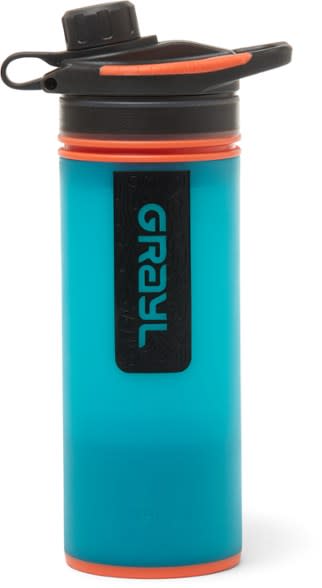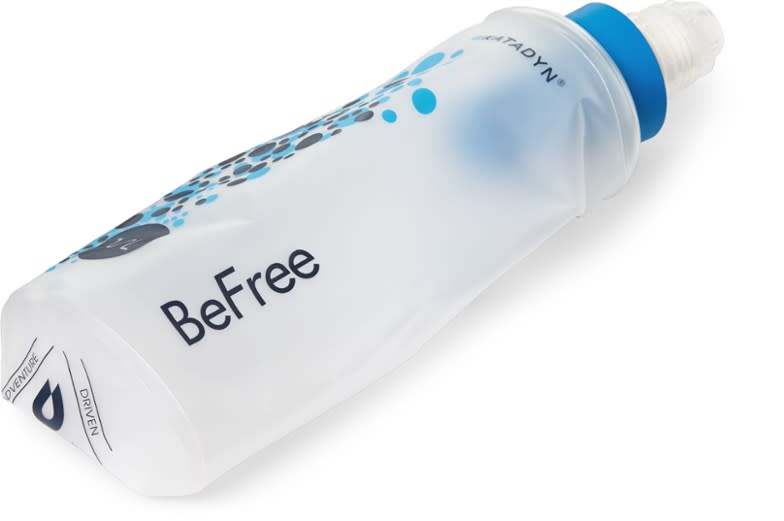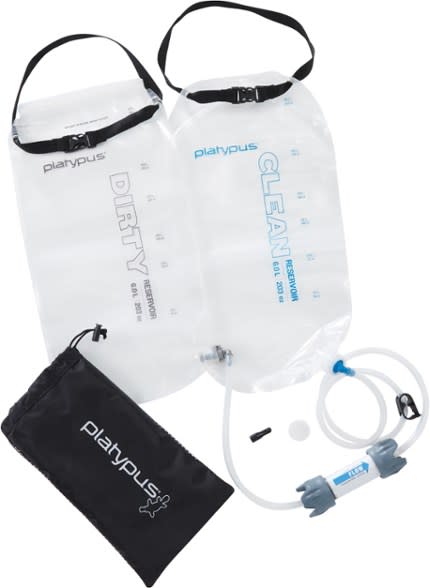Review: I Took LifeStraw’s Peak Series Water Filters Into the Wild

If you purchase an independently reviewed product or service through a link on our website, SPY.com may receive an affiliate commission.
Wilderness water filtering is serious business. Having a quality water filter can make a day hike more bearable, eliminating the need to carry drinking water and safely enjoy a source closer to nature. It also makes sense for big groups as you don’t need to lug a ton of water for everyone.
Today's Top Deals
These Amazon Security Cameras Are Going for Less Than $20 Each Right Now
Over 34,000 Users Gave These Fat Burner Supplements 5 Stars on Amazon
Yes, It’s Possible To Get AirPods for Less Than $100 — But Hurry, This Deal Won't Last Long
LifeStraw has been a leader in this category for some time, and their new Peak Series offers measurable advances on previous models, including an enhanced microfilmer within their filter system, lighter-weight construction and several other features. Naturally, I was curious about how their new filters stacked up to the old ones, so I took the 650ml Collapsible Water Bottle and the 3-liter Gravity Filter out on a day hike to see if they were easy to use, transportable and safe.
Below, you can read SPY’s full review of two products from LifeStraw’s Peak Series, including pros and cons, specifications, features we loved (and those we didn’t), overall quality and some alternatives to consider.

Specifications
650ml Bottle:
Dimensions: 4.1 x 10 in | 10.4 x 25.4 cm
Weight: 3.2 oz | 102 g
3L Gravity Filter System:
Dimensions: 8.6 x 20.8 in | 22 x 52.9 cm
Weight: 8.1oz | 228 g
Hose Length: 47 in | 1.2 m
Easy Initial Setup
Most water filters are easy to use with one cap to screw in the filter, you’re ready to fill and you’re off drinking. With LifeStraw’s Peak Series, the gravity filter requires additional logistics of finding a place to hang it from, but if you’re in the wilderness, that shouldn’t be too hard (you could even hold it if needed). The gravity filter takes a few extra minutes compared to other water filters with just a screw-in filter, but once you ensure you have the right hose connector it’s pretty easy to fill.
Be sure to follow the included instructions, there’s a right and wrong way to do this to ensure you have drinkable water. You’ll want to double-check you have the correct end of the filter screwed into the bottle top and the right hose connector latched into the spout of the filter holder. The untreated water goes into the big bladder container of either vessel and I found Lifestraw did a good job of spelling out the instructions step-by-step making it easy to follow along.

Easy to Use and Great Design
LifeStraw’s engineers and designers did a really great job with the Peak Series. The simplistic setup and easy-to-follow instructions make them easy to use without a lot of fuss. The gravity filter is the most complicated item with a few extra pieces, but again that part isn’t hard, and because it uses gravity that means you can filter it just about anywhere in the wilderness. And let’s be honest, there’s something more rugged about filtering your own water while in the great outdoors making these perfect for a hike.
These are also beautifully designed in a matte solid color that is more pleasing than their technical counterparts, so you may even want to display them on your nice outdoor camping table or take it on a longer road trip. (For more practical at-home use, check out their water pitcher, which uses the same technology.)

Easy to Filter and Water Tastes Refreshing
While I didn’t do any detailed scientific testing, I did the next best thing: I drank the filtered water. I filled the bottle from a local creek and it had a bit of a sedimentary taste, but it was still refreshing and I enjoyed having ice-cold, April mountain runoff water. While it’s hard to say whether the water bottle worked since I didn’t do any lab testing, I didn’t get sick from the water either. According to Lifestraw both of these meet the US EPA & NSF P231 drinking water standards for the removal of bacteria and parasites, though it’s best to make sure the water source you’re taking from is safe to drink.
The bottle is quite foolproof, once you lock the cap and filter into place the gravity filter hose starts working almost immediately to filter the water. It’s straightforward to use and I’m already thinking about hiking more often just so I can use both bottles.

Filters Require Extra Step to Store
Both products come unscrewed in a couple of easy steps, but it’s more complicated when it comes to long-term storage. If you plan on shelving the filter for more than a month, then you’ll need to follow the directions for storage. It’s recommended to keep the filter in saline solution to prevent it from drying out and hampering the efficacy of the technology. While it does create an extra step, this will ensure it still works next time you want to use it.

The Verdict
Yes, it’s worth it. The Peak Series offers reliable, cost-effective and almost-zero complication water filtration. No bleaching formulas or multiple-hose situations here like with other filtration systems, just fluid drinking water in a matter of seconds. Setup is easy, use is even easier and there’s plenty to like about the overall use case such as being able to use it anywhere outdoors since it only requires a place to hang and the aesthetically pleasing design.
Having accessible filtration means no need to lug your own water and it reduces your need to use anything beyond a single reusable water bottle. Lifestraw filters are slated to last up to 1,000 gallons (with proper care, be sure to follow the instructions) and replacement filters are under $20. The Peak Series is a winner in my book.

Should You Buy It?
Yes. Over the years, Lifestraw has become known for its quality filtration products and the Peak Series is no different giving reliable water filtration. With both items under $60, these are great buys for the average to serious hiker and campers because it reduces the need to lug around a ton of water on a hike, or bring single-use plastic bottles camping. Also, the charity component of the company is simply an added bonus to an already great buy.
Pros
Great design
Easy to use
Reasonable price point
Excellent longevity with proper storage
Cons
Some may find the gravity system confusing or hard to fill at first
Could use more sizing options
Buy: LifeStraw Peak Series Water Bottle $26.41 (orig. $32.95) 20% OFF
Buy: LifeStraw Peak Series 3L Gravity Water Filter $26.41 (orig. $32.95) 20% OFF
What Are Some of the Alternatives?
Grayl GeoPress Water Filter and Purifier Bottle
We found Grayl’s earlier press filter models quite difficult to use on a regular basis. We haven’t tested their most recent models, but they claim that the pressing has gotten easier and overall advances in the technology have made it a better filter. They are, however, one of the only brands to claim you can drink water from all seven continents with their filter.

Buy: Grayl GeoPress Water Filter and Purifier Bottle $99.95
Katadyn BeFree 1.0 L Water Filter Bottle
Katadyn is not as flashy as other brands but performs just as well as the bigger names. We like that this super lightweight 1-liter bottle is collapsible, but it’s only tested to 1,000 liters, which would give it half the filtering lifespan of the Lifestraw bottle we tested.

Buy: Katadyn Be Free 1.0L Water Filter Bottle $49.95
Platypus GravityWorks 6.0 L Water Filter System
This is a high-capacity system that requires two separate bags to filter (one “dirty” and one “clean”). The beauty of this system is that you can filter more water at a faster rate, so it’s better for bigger groups. The bad part is that there are more steps involved.

Buy: Platypus GravityWorks 6.0 L Water Filter System $134.95
Be the First To Know About New Deals!
Cancel that pricy massage: these massage guns will save you money in the long run.https://t.co/XvTA81kp1K
— SPY.com (@SpyDotCom) March 8, 2022
More Top Deals from SPY
Best of SPY

